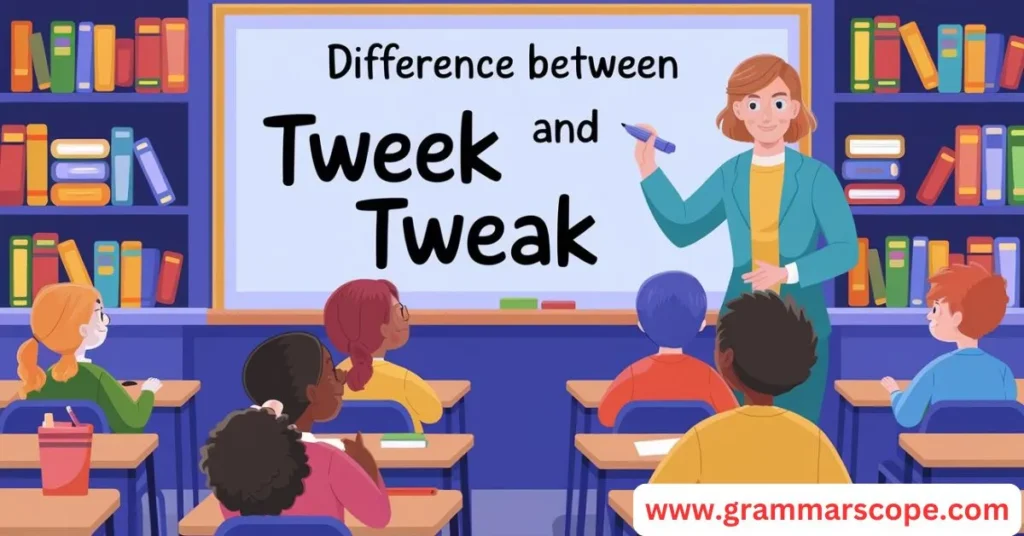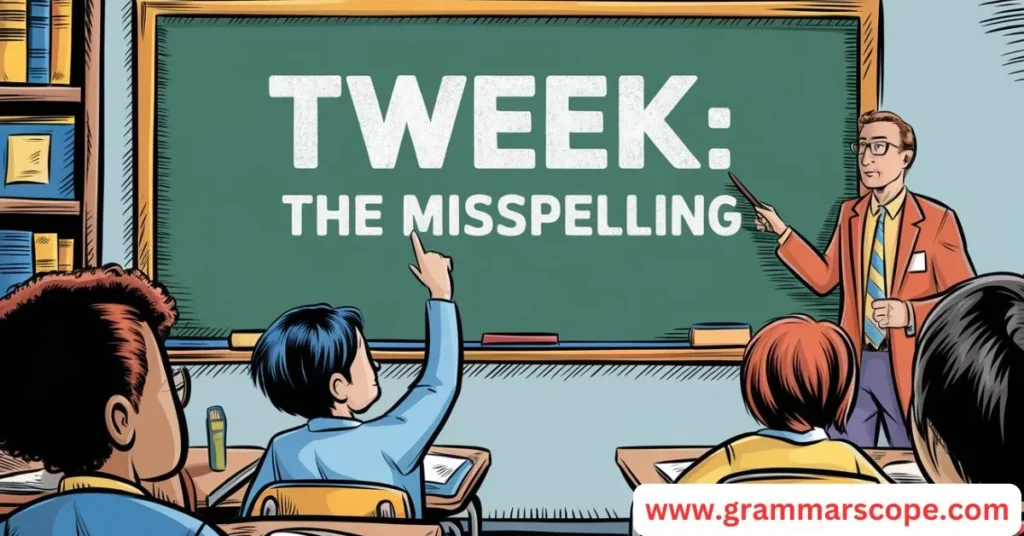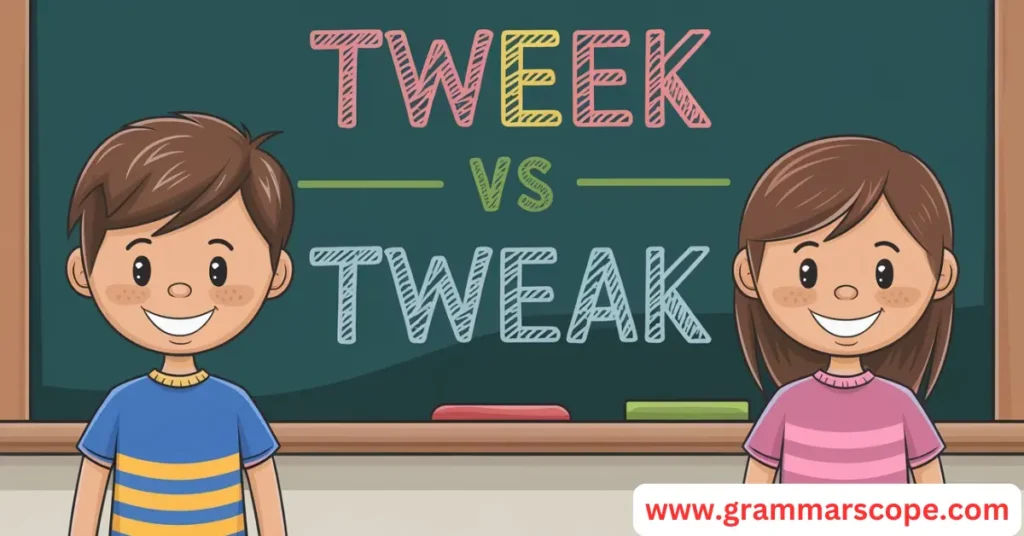In the world of language and communication, even the smallest errors can have a lasting impact. One such confusion often arises with “tweek vs tweak”—two words that sound alike but couldn’t be more different in meaning and usage. If you’ve ever found yourself wondering which one to use, you’re not alone.
The English language is rife with words that trip people up, and tweek or tweak is a perfect example. While “tweak” is the correct spelling, “tweek” frequently appears in informal texts, emails, and even professional documents. This article will break down the difference between tweek and tweak, explain their proper usage, and provide practical examples to help you avoid mistakes in the future.
Why is this distinction important? Because your ability to use language accurately reflects your professionalism and attention to detail. Mistakes like confusing “tweek” for “tweak” can undermine your credibility, especially in formal settings. Let’s dive into the meanings of these terms, explore why the confusion exists, and learn how to use them correctly.
What Is the Difference Between Tweek and Tweak?

The difference between these two terms is simple yet crucial:
- Tweak is the correct spelling and is recognized in dictionaries.
- Tweek is a misspelling commonly caused by phonetic confusion or typing errors.
To make this distinction clearer, here’s a quick table:
| Term | Correct/Incorrect | Meaning | Example Usage |
|---|---|---|---|
| Tweak | Correct | To make small adjustments or fine-tune something | “We need to tweak the design for better user experience.” |
| Tweek | Incorrect | Misspelling of “tweak” | “I’ll make the necessary tweeks.” (Incorrect spelling in professional use) |
Tweak: The Correct Word
Tweak Definition
The word “tweak” means to make small adjustments or fine-tune something. It can also refer to pinching or twisting lightly, though this meaning is less common today.
Examples of “Tweak” in Context:
- Fine-tuning a design: “The team made a few tweaks to the layout for better readability.”
- Adjusting processes: “We need to tweak our workflow to improve efficiency.”
- Personal improvements: “I tweaked my resume before sending it to the recruiter.”
Tweak Usage in Different Scenarios
Here are real-world examples of how to use “tweak” effectively:
1. Email Correspondence: Refining a Proposal
Subject: Proposal Draft for Review
Dear Sarah,
Thank you for your feedback on the project proposal. I’ve incorporated a few tweaks to address your concerns, particularly in the budget allocation and timeline sections. Please review the updated document and let me know your thoughts.
Best regards,
John
2. Design Feedback: Small Modifications
Scenario: A graphic designer receives feedback on a new brand logo.
Hi Elena,
Great work on the logo design! Could you make a couple of tweaks to the font size and color scheme? Once done, it’ll be ready for client approval.
Thanks,
Tom
3. Technology Updates: Software Tweaks
Scenario: A software team discusses feature updates.
Team,
We’ve implemented a few tweaks to the user interface based on the feedback from our beta testers. These changes should improve navigation and overall user experience. Please review the updated version and share any additional insights.
Regards,
Emma
Tweek: The Misspelling

Why Does the Confusion Between Tweek and Tweak Occur?
The frequent mix-up between “tweek” and “tweak” can be attributed to two main factors:
1. Phonetic Confusion
The similar sounds of “tweak” and “tweek” lead many to assume they are interchangeable. However, only “tweak” is correct.
2. Autocorrect Errors
Typing errors or predictive text suggestions can result in “tweek” being used unintentionally, especially in casual communication.
Tweak vs Tweek Meaning: Why Spelling Accuracy Matters
Spelling accuracy plays a crucial role in professional communication. Using the wrong word, such as “tweek” instead of “tweak,” can create misunderstandings or make your writing appear unpolished.
Consider this scenario:
- A client emails you asking for a small adjustment to their project. If you reply with, “I’ll make the necessary tweeks,” it may come across as careless or unprofessional.
In business settings, even small details like spelling demonstrate your commitment to quality and accuracy. That’s why mastering the difference between tweek and tweak is essential.
Frequently Asked Question
Is it tweak or tweek?
The correct spelling is “tweak.”
“Tweak” refers to making small adjustments or fine-tuning something, while “tweek” is a common misspelling of the word. Always use “tweak” in professional and casual contexts to ensure proper spelling and clarity.
What is the usage of tweaks?
Tweaks are small adjustments or modifications made to improve, refine, or optimize something, commonly used in professional communication, technology, design, and personal projects.
What is Tweeking slang for?
“Tweeking” is slang for behaving in an erratic, hyperactive, or jittery manner, often associated with the effects of stimulants like methamphetamine. It can also refer to someone acting unusually energetic or nervous.
Is tweek a real word?
No, “tweek” is not a standard word in the English language. It is often mistakenly used instead of “tweak,” which is the correct term. “Tweak” means to make small adjustments or modifications. “Tweek” is commonly seen as a misspelling or slang, particularly in certain contexts like drug culture.
Conclusion: Tweek vs Tweak—Getting It Right
In conclusion, the debate of “tweek vs tweak” highlights the importance of spelling accuracy in effective communication. While “tweak” is the correct term for small adjustments, “tweek” is merely a common misspelling. Understanding this distinction not only enhances your writing skills but also boosts your professional credibility.
By mastering the proper usage of words like “tweak,” you can refine your writing, avoid embarrassing errors, and convey your ideas with confidence. Remember, it’s the little things—like spelling—that make a big difference in how your message is received.

Emma Olivia is an experienced blogger and the creative mind behind Grammar Scope. With a passion for language and years of writing expertise, she crafts engaging, informative content that simplifies grammar and writing tips for readers worldwide. Emma’s dedication to clear communication and love for the written word shine through every article she publishes, making Grammar Scope a trusted resource for language enthusiasts and learners alike.







당신에게서 오는 멋진 아이템입니다.
이전에 당신의 글을 기억하고 있었고,
당신은 그저 너무 훌륭합니다. 여기서 얻은 것을 정말 좋아하고, 당신이
말하는 방식과 그것을 말하는 방식을 정말 좋아합니다.
재미있고 여전히 스마트하게 유지합니다.
당신에게서 훨씬 더 읽고 싶습니다.
이건 진짜 멋진 사이트입니다.
Aw, this was an extremely nice post. Taking a few minutes and actual effort to create a superb article… but what can I say… I procrastinate a whole lot and never manage to get anything done.